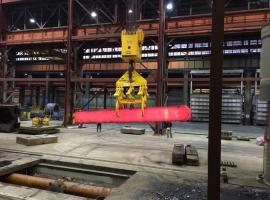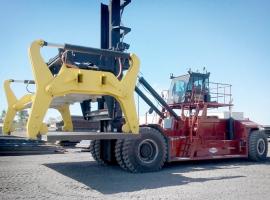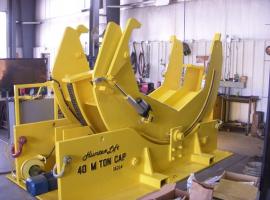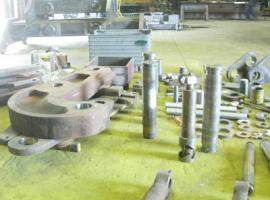When approaching the design, two of the most important things that help dictate the design of a lifting device is the load that will be lifted and the environment the lift will be used in. Very specific design classifications (i.e. design category B which has a minimum 3:1 safety factor), need to be followed. This category includes every engineered part of the lifting device.
These devices must also be designed by a qualified engineer to accommodate the intended load. Additionally, performing any activities using these devices also requires a qualified rigger, a rigger who is also a qualified technician, to inspect the rigging equipment before each shift.
Markings for specific load ratings
Structural and mechanical lifting devices are required to be marked on the main structure where it is visible. Established standards require the lifting device to withstand the forces imposed by its rated load, with a certain design factor, based on yield strength, for load bearing structural components. In addition, all welding on components of lifting devices must be in accordance with specific ANSI/AWS standards. A nameplate or other permanent marking must display:
(1) manufacturer’s name and contact information
(2) serial number (unique unit identifier)
(3) lifter weight, if over 100 lb (45 kg)
(4) cold current (amps) (when applicable)
(5) rated voltage (when applicable)
(6) rated load [as described in (a)]
(7) ASME BTH-1 Design Category
(8) ASME BTH-1 Service Class
Identifying the Service Class
Once the design is established, the lifting device must be rated for a Service Class. The Service Class takes into account the number of load cycles a lifter will see during its lifespan.
Every time a lift is used, it flexes, and if it flexes enough times it will fracture – this is called fatigue. Fatigue needs to be taken into consideration to ensure safety and long life of the lift. Some key considerations include how long the device will be in use, lifts per day and the load capacities.
Frequent Inspections
Before every lift, the technician must inspect all new, altered, modified or repaired lifting devices to identify any deficiencies and ensure compliance with applicable standards.
Materials and Design Selection
Once the design category and service class are established, the engineer can select the material and determine a design for the lift that meets both the specifications and design requirements. The material must be of sufficient strength to handle the design forces and safety requirements, but also be economical for the customer’s needs. Your lifts must be made by a reputable manufacturer. If you choose to make them yourself, remember to follow all of the standards that are put in place to keep you and your associates safe.
Conclusion
Lift design and safety go hand in hand. It is very important to follow the design and service requirements as established by specific standards. In addition, markings, frequent inspections and the correct selection of materials and engineering are the keys to safety and design of below the hook lifting devices.
Hunter Lift, Ltd. is the leader in custom designed and manufactured “Below the Hook” lifting devices and mobile crane attachments. To speak with a Hunter Lift Technical Engineer, call 800-231-6501 for a no cost consultation.
And thank you for reading our blog.
Search
categories
- Select...
- Safety (13)
- Lifting Equipment (12)
- Company (6)
- Materials (5)
- Education (4)
- Services (3)
- Industries (3)
- News (3)
- Cranes (2)
- History (1)
Recent Posts
Comprehensive Guide to Below the Hook Lifting Devices The 6 Advantages of Below The Hook Lifting Devices The Keys to Safety and Design Requirements of Below-the-Hook Lifting Devices Why Below the Hook Lifting Devices Are Essential to Lifting? Requirements for Below the Hook Lifting Devicesarchives
- April 2023 (1)
- January 2023 (1)
- October 2022 (1)
- September 2022 (1)
- August 2022 (3)
- July 2022 (3)
- July 2017 (1)
- June 2017 (1)
- May 2017 (1)
- April 2017 (1)
- January 2017 (1)
- December 2016 (1)





